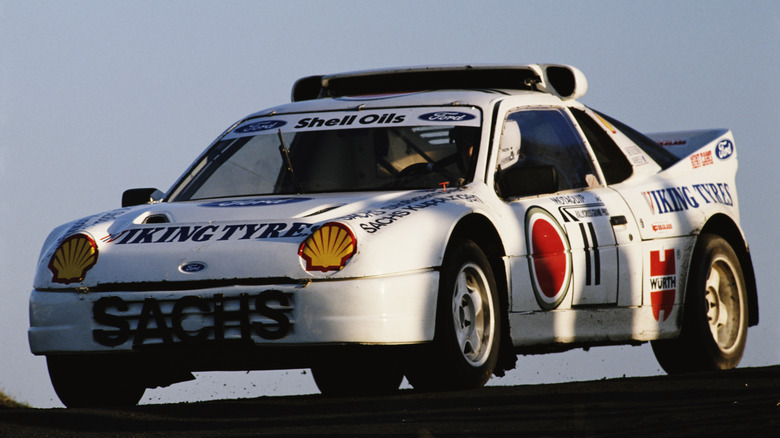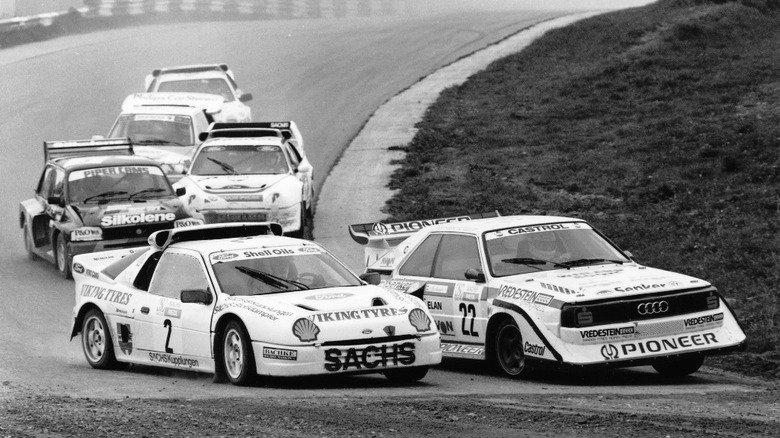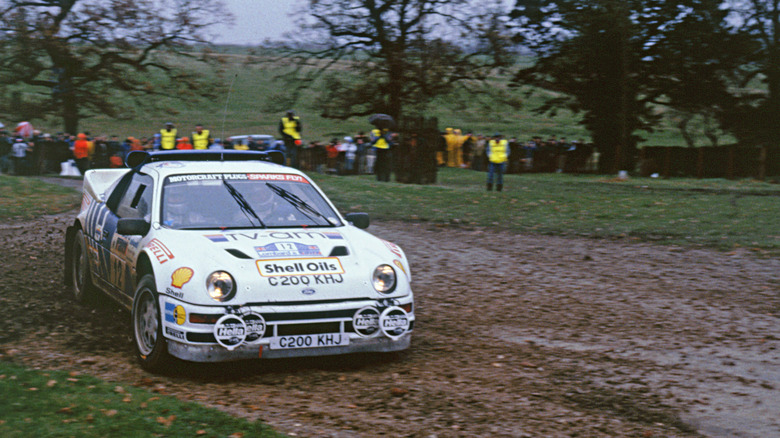Why Was The Ford RS200 Banned From Rally Racing, & What Were Its Major Issues?
In rally racing, cars designed to push the boundaries of speed navigate winding dirt tracks sometimes mere feet away from a crowd of spectators, inching closer to get a better view. It's a dangerous sport in the first place, but take the above scene and dial it up to the maximum, and that will give you an idea of what a Group B rally was like.
Group B started in 1982 and ended in 1986, but its short run will forever be remembered because it hosted some truly outrageous competitions. Ford initially was going to adapt an Escort for Group B events, but realized it would be far too underpowered and lacked the cutting-edge technology of its competitors. So, a new car was built: the 4WD RS200. The history behind Ford's legendary RS200 and its subsequent competitions have hit mythic status and perfectly encapsulate the phrase, "They don't make 'em like they used to."
Unfortunately, the amped performance of more than 420 turbocharged horsepower gave way to devastating consequences for Group B cars, including the RS200, labeled by officials as too quick and too dangerous. This Ford rally car also suffered from touchy handling and significant turbo lag.
The car had a terrible accident in 1986
While the high-point for the RS200 was grabbing third place in it's first race series in Sweden in 1986, thing's took a very dark turn soon after. Joaquim Santos, the driver behind the wheel of the Ford RS200 during an event in Portugal, quickly reacted to an onlooker who had wandered onto the track. Narrowly avoiding the individual in the road, the rally driver's rapid maneuvers unfortunately resulted in the car spinning into a large group of spectators.
Sadly, the accident killed three people and injured more than 30 others. The fallout from the incident began almost immediately, with several racing teams withdrawing from further competition in the series. This wasn't the only deadly incident in Group B, as one stage in Corsica saw the fiery crash of a Lancia Delta S4, taking both the driver and co-driver's lives. These tragedies prompted the Federation Internationale de l'Automobile (FIA) to end Group B car racing.
[Featured image by Eddi Laumanns via Wikimedia Commons | Cropped and scaled | CC BY-SA 3.0]
The RS200 had touchy handling, and robust turbo lag
Many enthusiasts still hold a dear appreciation for the Group B era RS200. (Though one could argue it's still beat out by its predecessor, the Ford Escort RS1800 MKII, in terms of the best rally cars ever built.) Despite the RS200's nimble capabilities, it also had some notable flaws.
In general, its handling was extremely agile because the car's weight was really well-distributed. However, other drivers also noted that the RS200 can be tricky to drive due to it's sensitive steering and that it requires constant focus to maintain control. When you consider some of these competition models were capable of reaching 0 to 60 mph in just over two seconds, it becomes clear that this car demanded skill and experience behind the wheel.
Another issue with the RS200 had to do with its lag. In general, turbocharging transforms engine performance by forcing air through the system. However, it comes with a tradeoff: lag, or the delay experienced between pressing the pedal down and the turbo kicking in. The RS200 has a large amount of turbo lag unless the driver can maintain over around 6,000 rpm while racing. This issue also affects cornering, which can quickly swap between understeer and oversteer as the turbocharger lags and finally engages. Altogether, it was this accumulation of issues that led the legendary Ford RS200 to be banned from rally racing.


